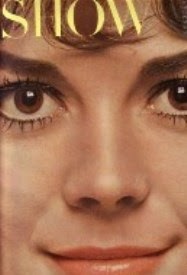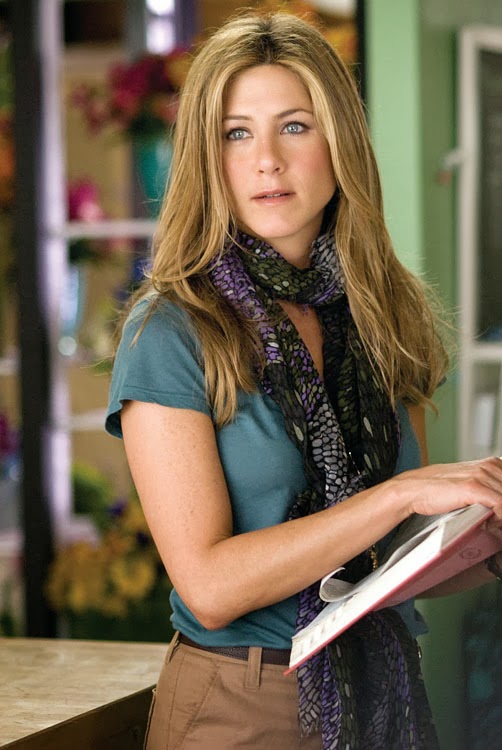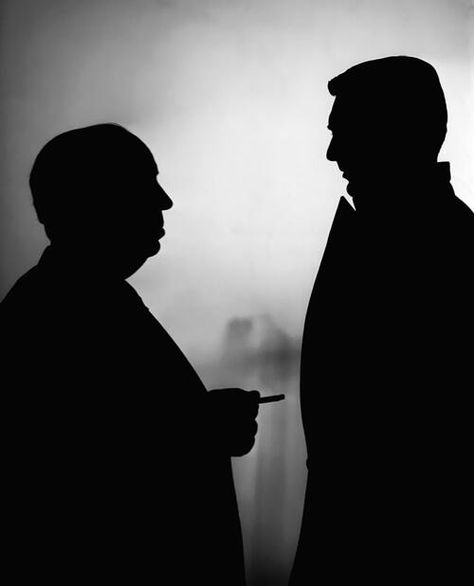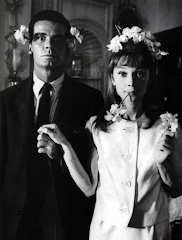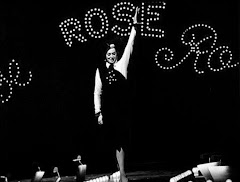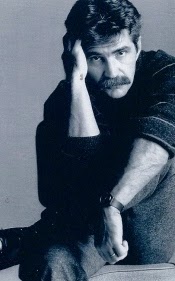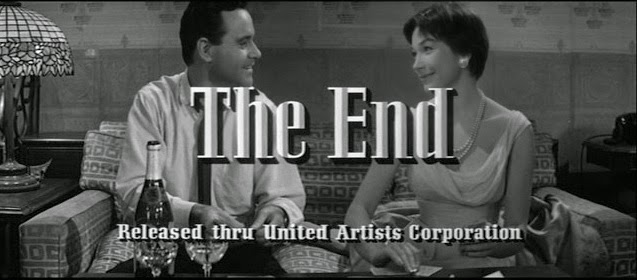Four plays. Four movies based on them. There was a time when the studios relied on the Broadway theater to supply it with its prestige productions - films not meant to make money but to win awards and to impress. You know, win Oscars. But these four are largely forgotten now.
When you're a prestige film and fail to win awards, you generally fall through the cracks, fated for oblivion.
Today, let's pretend we're in New York during the late 1950s and early '60s - the theater district's golden era - seeing something at the Belasco or Music Box theater.
George Roy Hill's "Toys in the Attic" (1963)Lillian Hellman's play about two spinster sisters who have been supporting their loser brother through several failed business ventures opened February 25th, 1960 at the Hudson Theatre and ran for 456 performances. Maureen Stapleton and Irene Worth played the sisters; Jason Robards was their brother, and Rochelle Oliver played his young wife. Arthur Penn directed.

The 1963 film version starred Geraldine Page and Wendy Hiller as sisters Carrie and Anna Berniers, respectively; Dean Martin as their brother Julian, and Yvette Mimieux as his bride. The great Gene Tierney played the role that won Anne Revere as Tony for the stage version.
James Poe adapted the Hellman play for director George Roy Hill, directing his second film here, following his 1962 debut with the adapation of another play -"Period of Adjustment," the Tennessee Williams comedy he directed on Broadway. Hill's next film was 1964's delightful "The World of Henry Orient" (which Hill would eventually direct as a stage musical, "Henry, Sweet, Henry") and, of course, he became a major player with 1969's "Butch Cassidy and the Sundance Kid."
The movie itself is a talky to-do - but what talk! - about an unusually dysfunctional and repressed family unraveling. In short, a wonderful afternoon at the theater.
Alex Segal's "All the Way Home" (1963)This piece has something of a legendary history. Based on James Agee's Pulitzer Prize-winning novel, "A Death in the Family," it was first adapted by Tad Mosel for the stage in 1960. It opened at the Belasco Theater on November 30th of that year, with a cast headed by Arthur Hill, Colleen Dewhurt and - now get this - Lillian Gish and Aline MacMahon. Actor's heaven. Again, Arthur Penn directed.
Set in Tennessee in the early 1900's, "All the Way Home" revolves around a man's sudden, accidental death and the ramifications that it has on his family, especially his young son. The play examines the process of mourning and the heartache that makes it almost impossible to heal.

The 1963 film version, directed by Alex Segal, starred Robert Preston as the father, Jean Simmons as his wife, Pat Hingle as his brother and, recreating her Broadway role, the great MacMahon as Aunt Hannah. Michael Kearney played the boy, a role played on Broadway by John Megna, a child actor best known for his role as Dill in the film, "To Kill a Mockingbird." Philip H. Reisman Jr. did the adaptation for this most affecting film.
"All the Way Home" was also filmed twice for televison - first in 1971 with Fred Coe direcing Richard Kiley, Joanne Woodward and (again) Hingle in a teleplay adaptation by Mosel. The second TV version, shot in 1981 by Delbert Mann, starred William Hurt, Sally Field and Ned Beatty. Polly Holliday played Aunt Hannah.
Delbert Mann's "The Dark at the Top of the Stairs" (1960)There are those who thought that the great playwright William Inge would enjoy the household-name status of Tennessee Williams, given that in the 1950s he wrote such plays as "Come Back, Little Sheba," "Picnic," "Bus Stop" and, in 1957, "The Dark at the Top of the Stairs," all of which were adapted into films. His 1959 play, "A Loss of Roses," became the 1963 film, "The Stripper" and he also wrote the screenplay for Elia Kazan's "Splendor in the Grass" (1961), in which Inge played the small role of of a minister who counsels Natalie Wood.

Kazan also directed the Broadway version of "The Dark at the Top of the Stairs," which opend at the Music Box Theatre on December 5, 1957, with a cast including of Eileen Heckart, Pat Hingle and Teresa Wright. Once again, we have another dysfunctional family drama about a man who, in middle age and out of work, tries to compensate for a lack of self esteem by cheating on his wife with another woman in another town.
The 1960 film, directed by Delbert Mann (again) from Harriet Frank, Jr.'s adapation, starred Robert Preston (again) in the Pat Hingle role, along with Dorothy McGuire, Eve Arden, Angela Lansbury and a young Shirley Knight, an Oscar nominee. Preston, great as always, did this between his stage and film appearances in "The Music Man." He had a great second act, thanks to the success of the musical, giving memorable turns in such titles as "Junior Bonner," "Child's Play," the aforementioned "All the Way Home," "Semi-Tough" and "Mame."
Delbert Mann's "Middle of the Night" (1959)
Paddy Chayefsky's tender play about a young woman looking for a father figure, opened on Broadway on February 8th, 1956 and starred Edward G. Robinson (who won a Tony Award for his performance) and a young actress named Gena Rowlands. It was adapted from a teleplay that Chayefsky wrote for NBC's Philco Television Playhouse that was performed on September 19th, 1954. E.G. Marshall and Eva Marie Saint starred for director Delbert Mann (yes, again) in the TV version.
When Columbia purchased the film rights in 1959, Chayefsky was part of the package, writing the adaptation of his play and, to his credit, he did not tone down the Jewishness of the male lead character to accomodate either Fredric March who played the part or the audience of the day.
The ubiquitous Mann once again directed, eliciting unusually subtle performances from both March and Kim Novak as a widower businessman and the much younger secretary with whom he falls in love, deciding against everyone's wishes to marry her.
"Middle of the Night," voted One of the Year's Ten Best Films by the 1959 National Board of Review, has never been released on home entertainment.
Cinema Obscura is a recurring feature of The Passionate Moviegoer, devoted to those films that have been largely forgotten. Suggestions welcome. (Artwork: From top. Wendy Hiller, Dean Martin and Geraldine Page in "Toys in the Attic"; Robert Preston and Jean Simmons in "All the Way Home," and poster art for both "The Dark at the Top of the Stairs" and "Middle of the Night")
* * *
Anyone interested in perusing some 2060 of my film reviews, dating back to 1994, can do so by simply going to
RottenTomatoes.Com








































